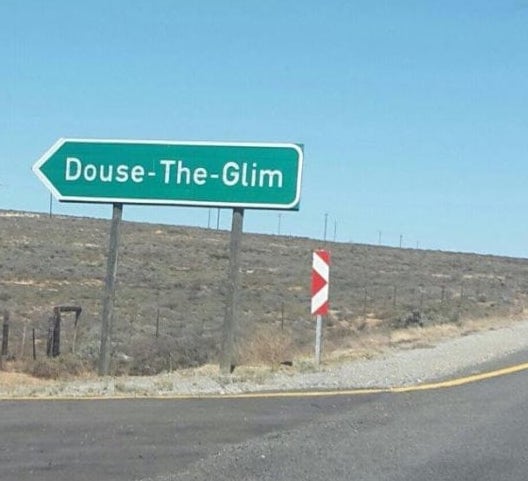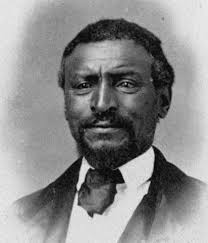Douse the Glim is an old Scottish slogan that means “Put out the Light”.
During the Boer War in South Africa, a command rang out through the ranks of a stranded Scottish unit as dusk approached: “Douse the Glim” — which meant “Extinguish all the Lights” (candles,
Today, a South African farm still

Another place that bears that name is a cave on the back side of Culps Hill, Gettysburg, PA. I found it last year; it’s a natural cleft between two very large boulders, on the steep northern summit of Culp’s Hill.
It’s become a famous place for me lately as I’ve wrestled with developing both gospel-courageous leaders and gospel-corrective leaders.
Sometime in 1858, a group of thirty-three Pennsylvania College students formed an unofficial and unsanctioned fraternity at the college called the Beta Deltas. Known within the fraternity as the Black Ducks, they were a “source of unmitigated annoyance” to town and college officials because of their “wild and
To meet in secret, they secured an apartment on the second story of a frame building on East Middle Street in Gettysburg. They dubbed it the slum and no doubt liked that they could pursue their “wild and
They also found several other rendezvous spots, known only to group leaders, where members could avoid the attention of town and college officials. One of these secret spots was this natural cleft of rocks–a new favorite thin places in Gettysburg–well outside of town on the summit of Culp’s Hill. Five members of the fraternity labored to convert the cleft into a “cave.”
Harold Wert, a former member, described it in a 1904 article: “It’s a mile over there, right on the crest of Culp’s Hill. There were two rocks parallel with each other, about five feet apart, that rose to the height of ten feet. The sides were as regular as if adjusted with a plumb line. We walled up one end. At the other, the rapid rise of the hill brings the ground up to a level with the top of the rocks. We made a roof over the same space between the rocks with a heavy corn wood. All artificial work was heavily banked and covered with earth, and this again the leaves in great masses. There is one carefully concealed entrance at the point where the upward swell of the hill gives a steep descent into the rayless dungeon.”
The Black Ducks christened it the “Dowse-the-Glim Cave” and its creation was solely intended to give privileged fraternity members shelter from the outside world, a place to “extinguish the light” and to pursue who knows what kind of behavior in the dark.
But something happened in December 1859, right around Christmas time. The Black Ducks were celebrating the holidays in the “Slum” when a fraternity brother brought news of a fugitive slave. This brother had found him wandering, frightened, through the snow-covered streets of Gettysburg. He was hiding in one of the “shanties on the lane [in] back of Washington Street.” A slave catcher from below the Mason-Dixon line just south of Gettysburg was accompanied by a U.S. Marshall. They had begun searching the neighborhood, door to door, forcing the fugitive to flee into the streets, where a Black Duck found him–cold, hungry and afraid.

The Black Duck brought him to the East Middle Street apartment and after some spirited discussion, he and rest of the “law-defying” Black Ducks took him to the “Dowse the Glim Cave”. They hide him securely there, insulating him from the cold with leaves and earth, no doubt warning him not to start a fire. The fugitive stayed there for two days.
By some accounts, the Black Ducks secretly contacted John “Jack” Hopkins, the black janitor at Pennslyvania College — who was an agent for the Underground Railroad. Hopkins helped the Black Ducks contact Quaker activists in nearby York Springs (probably William and Phoebe Wright) who helped ferry the fugitive from the Dowse the Glim Cave to Harrisburg.
Wert himself stated that “the majority of the Black Ducks would have scorned the appellation of abolitionist, and rejected with scorn the idea of becoming agents of the unlawful Underground Railroad.” But this Christmas encounter with an actual freedom seeker, whom they hid and fed in the darkness of their cave probably opened their eyes and heart to an issue that could no longer be ignored.
Over the next two months, as word of their actions filtered into the Gettysburg African American community, they became increasingly involved in hiding runaways. As an employee of the college, Hopkins could easily contact one of the Black Ducks, who would then make arrangements to secretly transport a recently-arrived fugitive out to Dowse-the-Glim Cave on Culp’s Hill until a safe journey to York Springs could be made.
No records were kept because “ferrying fugitives” was against the law. But in this case, the Black
Dowse-the-Glim Cave can still be easily viewed today and if you want to see it, I’ll show you. Ironically, it lies within a few yards of one of the most famous and heavily-visited Civil War battlefield sites: the summit of Culp’s Hill.
The artificial roof and end wall of the hideout were destroyed by the Union troops that occupied the slopes of Culp’s Hill during the battle, and the distinctive space between the rocks has been largely filled in over the years.
It remains, however, as a testament to
I can’t help but think about these wild boys and that Christmas 1859. Could it be the Dowse the Glim boys were a “people dwelling in darkness who have seen a great light, and for those dwelling in the region and shadow of death, on them a light has dawned?” Matthew 4:16